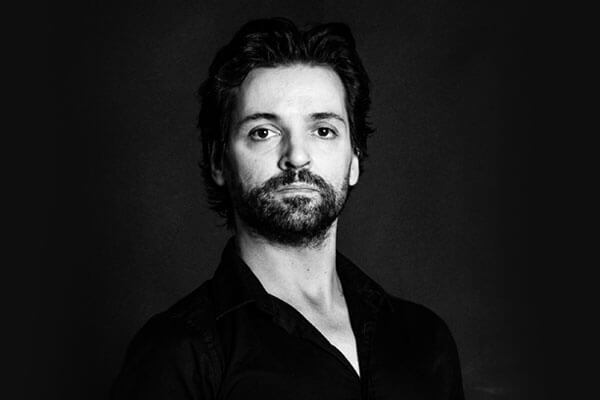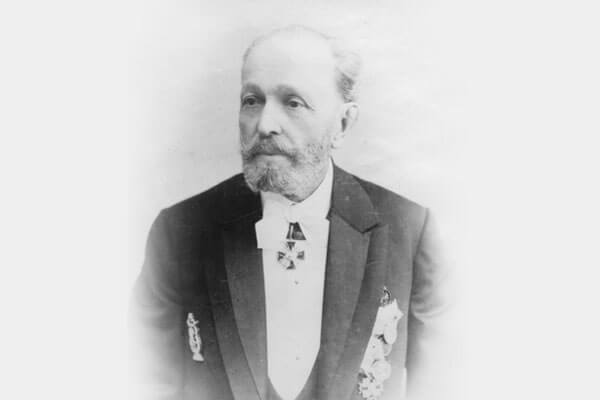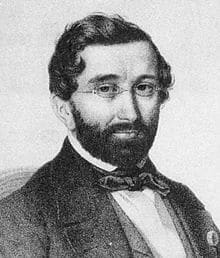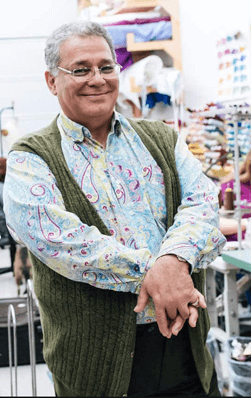
Angel Corella is regarded as one of the finest dancers of his generation. His talent, passion, and technique have brought him worldwide acclaim and established him as one of the most recognizable names in dance. Angel was appointed artistic director of Philadelphia Ballet beginning with our 2014/2015 season.
Angel joined American Ballet Theatre in 1995 and quickly rose to the rank of principal dancer. Throughout his 17-year career with them, he excelled in a wide range of repertory, performing such iconic roles as Prince Siegfried in Swan Lake, Romeo in Romeo and Juliet, and the Nutcracker Prince in The Nutcracker. He has also appeared as a guest artist with the Royal Ballet in London, the Kirov Ballet in Russia, and New York City Ballet. As well, Angel has received numerous awards, including 1st prize in the National Ballet Competition in Spain (1991), the Prix Benois de la Danse (2000), and the National Award of Spain (2003). He has danced for Queen Elizabeth II, Queen Sophia of Spain, and for Presidents Bill Clinton, George W. Bush, and Barack Obama.
Angel’s onstage passion and talents have translated to his behind-the-scenes career as well. From 2008 to 2014, he served as director for his own company, the Barcelona Ballet (formerly the Corella Ballet), in his native Spain, where he is regarded as a national treasure. His was the first classical ballet company established in the country in 20 years. And while Angel retired from American Ballet Theater in June 2012, he continued to dance with his own company.
A passionate teacher and mentor to young professional dancers, Angel has taught at various summer programs as well as leading dance schools, including the Royal Ballet School in London. He now applies that same passion, verve, and balletic insight to the dancers of Philadelphia Ballet.

Marius Petipa, the “father of classical ballet,” was born in Marseilles, France, in 1819. He began his dance training at the age of seven with his father, Jean Petipa, the French dancer and teacher. Marius was educated at the Grand College in Brussels and also attended the conservatoire, where he studied music.
Although he disliked dancing in those early years, his progress was so great that he made his debut in 1831 in his father’s production of Gardel’s La Dansomanie.
In 1834 Jean Petipa became Maitre de Ballet at the theatre in Bordeaux and it was here that Marius completed his education. At the age of sixteen, he became premier danseur at the theatre in Nantes, where he also produced several short ballets.
In 1839 Marius left Nantes to tour North America with his father, and on their return visit went to Paris. The following year he made his debut at the Comedie Francaise, where he partnered Carlotte Grisi in a benefit performance. He continued his studies with A. Vestris and became a principal dancer in Bordeaux.
Petipa next went to Spain in 1845, to work at the King’s Theatre. While in Madrid, he studied Spanish dance and choreographed Carmen et son Terero, La Perle de Seville, L’Aventure d’une fille de Madrid, La Fleur de Grenade, and Depart Dour la Course des Toureaux.
Petipa returned to Paris as a principal dancer, but in 1847 left for Russia. He had signed a one-year contract with the St. Petersburg Imperial Theatre, but was to remain there for the rest of his life.
As a principal dancer, Petipa often appeared with Fanny Elssler and was much acclaimed for his performances in such ballets as Paquita (which he restaged and in which made his debut), Giselle, La Peri, Armida, Catarina, Le Delire d’un peintre, Esmeralda, Le Corsaire and Faust. Considered an excellent dancer and partner, his acting, stage manners and pantomime were held up as examples for many generations of dancers.
When Giselle was revived in 1850, Petipa made some changes in the Wilis scenes, which became the Grand Pas des Wilis of 1884. In 1854, he married Maria Sourovshchikova, a student in the graduating class of the Imperial School, who later danced in many of her husband’s ballets. (Petipa’s second marriage was to Lubova Leonidovna, a member of the Moscow Ballet, in 1882.) In 1854 he became an instructor in the school, while continuing to dance and to restage ballets from the French repertoire.
Sources differ on the first original work he staged for the Imperial Theatre: some state it was The Star of Granada, others that it was A Marriage During Regency. But all sources concur that his first great success was The Daughter of Pharoh (staged in six weeks), which resulted in his appointment as Choreographer-in-Chief in 1862 — a position he held for nearly fifty years.
In 1869 Petipa became Premier Ballet Master of the Imperial Theatre. The value of his accomplishments is inestimable: he produced more than sixty full-evening ballets and innumerable shorter works and he is considered to have laid the foundation for the entire school of Russian ballet. The ballet repertoire in the Soviet Union is still based mainly on his works.
Those who felt the dramatic content of ballet should be strengthened began to oppose Petipa toward the end of his career. His noble classicism and consciousness of form was considered old-fashioned, and in 1903, at age 84, Petipa was forced to retire from the Imperial Theatre as a direct result of the failure of his ballet, The Magic Mirror. His last years were filled with bitterness and disillusionment because his beloved theatre had been taken away. He died in St. Petersburg in 1910.
Marius Petipa is considered one of the greatest choreographers of all time. He researched the subject matter of the ballets he staged, making careful and detailed preparations for each production, and then worked closely with the designer and composer. Petipa elevated the Russian ballet to international fame and laid the cornerstone for 20th Century ballet. His classicism integrated the purity of the French school with Italian virtuosity.

Adolphe Adam (1803–56) was one of the most prolific composers for the Paris stages. He was innovative in the emotional connection he introduced between his music and events of stage. Today he is best remembered for his ballet scores Le Corsaire and Giselle.
Adam was born in Paris. His father, a pianist and composer, did not encourage his son to follow him into music, but from an early age Adam determined to compose for the theatre. He entered the Paris Conservatoire aged 17 and studied organ, counterpoint and composition. Adam met the librettist Eugène Scribe on tour in Geneva in 1826 and soon afterwards collaborated with him on a number of comic operas, including the hugely successful Le Chalet (1834). Adam made his debut at the Opéra-Comique with Pierre et Catherine (1829). After the 1830 July Revolution he moved to London, where his works included His First Campaign. Adam returned to Paris permanently in 1833 and made his Paris Opéra debut with the ballet La Fille du Danube (1836) for Marie Taglioni. His ballet Giselle (1841) for the Opéra, allegedly composed in three weeks, is his most enduring work.
In 1847 Adam opened a new Paris opera house, the Opéra-National. It was forced to close after the 1849 revolution, leaving Adam ruined. He created his last great ballet, Le Corsaire, in 1856. Prolific to the end of his life, he died in his sleep four days after the premiere of Les Pantins de Violette.

Born in a northern Rhodesian (now Zimbabwe) mining town in 1934, Peter completed his schooling in Johannesburg. He went on to study architecture at the University of Cape Town, where he also learned to dance at the then University Ballet Club.
Peter joined the Sadler’s Wells Opera Ballet in London at the age of 24. Later he danced with the Edinburgh International Ballet as well as the Festival Ballet before finding his niche at Western Theatre Ballet in 1960. Peter became one of the company’s principal dancers. But it was during a tour of Scandinavia that he was asked to make a few set and costume sketches for a production.
Peter’s next venture into design was the costumes and sets for Peter Darrell’s, Home.
Peter continued designing sets and costumes for ballets across Europe while dancing with Western Theatre Ballet. An injury closed the curtain on his dancing career in 1970 and Peter returned to South Africa in 1971.
Peter designed sets and costumes for ballets on a freelance basis for a few years before joining the Cape Performing Arts Board (CAPAB), where he also began working on operas and a variety of productions. He was then offered the position of Head of Design in the late 1970s. As Head of Design, Peter worked more on international productions. His designs have been used as far afield as the United States, London, Germany, Singapore, Hong Kong, Tokyo and New Zealand – and are still used today.
Peter retired to Sedgefield, South Africa in 2009.
Source. With edits made.

The international costume designer and builder, David Heuvel, has been with Ballet West since 1998 and currently holds the position of Costume Director and Designer. In addition, he has served as a guest designer for Carolina Ballet since 2004. David has also worked with such companies as Richmond Ballet, Ballet Du Nord, Nashville Ballet, Ballet Memphis, Ballet Hawaii, Singapore Ballet, PACT Ballet, Pacific Ballet Theatre, Alberta Ballet, Arizona Ballet, Oregon Ballet Theatre, City Ballet (San Diego), and Ballet West.
Source. With edits made